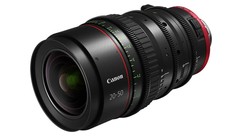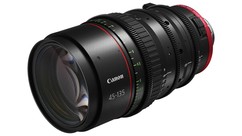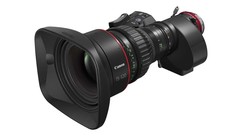METHODOLOGY
When I first did the Behind the Lens series, I focused pretty heavily on the technical aspects of a lens. Seeing the nuances of chromatic aberration, edge sharpening, and the like certainly has its advantages, but I also felt it took me further away from the creative analysis of the particular lens – to me, the real purpose of this kind of test. With this round, I decided to pull back on the clinical testing and instead focus on how they look and feel in a real-world shooting environment. At the end of the day, this is what we’re ultimately after when deciding which lens to use for a project.
For the test, I chose to look at the following elements:
- Build & Functionality
- Color
- Sharpness
- Flares
- Minimum Focus
THE LENSES
Canon recently introduced the Flex Zooms, 20-50mm T2.4 and 45-135mm T2.4, their first full frame cinema zooms, so this seemed like a great place to start. Full frame shooting has really come to the forefront in the last couple of years, so having some options that are hand-holdable was a real plus for the series. Though I only shot with the 45-135 this time around, it really gave me a great sense of the features of both focal lengths. With all of my experience with Canon glass, I am confident the look and feel of the longer lens will translate equally to the wide.
Canon also released the Cine-Servo 15-120, a “new and improved” version of the industry-standard 17-120. This is a fantastic documentary lens that ticks most, if not all, of the boxes required for documentary shooting. The biggest upgrade with this lens is the addition of a 1.5x teleconverter that not only extends the shooting range in Super35, but also allows the lens to cover Full Frame sensors as well.
THE CAMERA
The tests were shot on the Canon C500 Mark II in DCI 4K. This is the camera I own and mainly shoot with, so I wanted to see these lenses in context of what I know and am comfortable with. This helped me contextualize the creative look of the lenses into a world I am used to seeing, as well as ergonomically on a rig I am used to holding.
CONCLUSION
The Flex Zooms offer a great zoom range with exceptional build and glass qualities that cover full frame sensors with an incredibly fast and consistent T2.4 aperture. The look you get out of them is very clean, but cinematic, making them a great choice for high-end documentary work.
The 15-120mm allows for an exceptional zoom range from 15mm to an effective 180mm with the teleconverter engaged in Super35, but also allows for Full Frame coverage from 22.5mm to 180mm. This effectively assures that you will never need to change lenses on a shoot in either format. The macro function is great in giving you the ability to get incredibly close focus shots without needing to add diopters or changing lenses. The look is clean and sharp, giving you impressive image quality for any shoot.
I hope this review was helpful in your search for the right lens for your next documentary project. Happy shooting!














AbelCine encourages comments on our blog posts, as long as they are relevant and respectful in tone. To further professional dialog, we strongly encourage the use of real names. We reserve the right to remove any comments that violate our comment policy.
AbelCine publishes this blog as a free educational resource, and anyone may read the discussions posted here. However, if you want to join the conversation, please log in or register on our site.
We use Disqus to manage comments on this blog. If you already have a Disqus account registered under the same email as your AbelCine account, you will automatically be logged in when you sign in to our site. If not, please create a free account with Disqus using the same email as your AbelCine account.